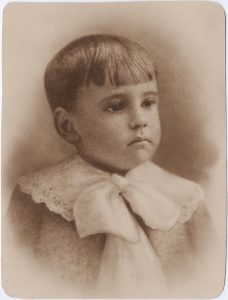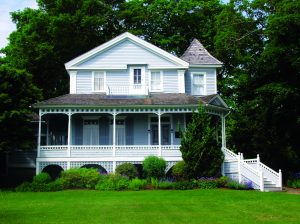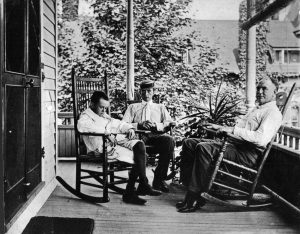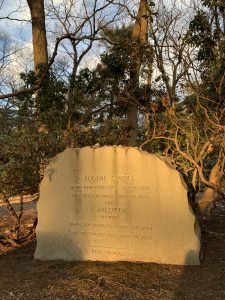Art and Museums, Teachers of Empathy: Reflections on the Life, Work, and Historic Homes of Eugene O’Neill
In what little spare time I have as a graduate student here at Tufts, I love reading plays. I’ve been hooked on this particular art form since I was ten years old, when my mom — an English major at the same university where I would end up minoring in the subject as an undergrad — introduced her three young daughters to the work of a certain playwright named William Shakespeare. The study in high school English class of Arthur Miller’s The Crucible and Oscar Wilde’s The Importance of Being Earnest, as well as the chance in a college Shakespeare course to fulfill a childhood dream and perform a soliloquy from Hamlet, cemented my fascination with plays, and ever since I have done my best to read and attend them whenever the chance presents itself.

Most recently, my sister — a devoted modern drama enthusiast — and I have been combing through the works of twentieth-century playwright Eugene O’Neill. Immediately upon finishing his autobiographical play Long Day’s Journey Into Night, I knew I had found a new favorite. It’s rare to read something so heartbreakingly honest, so introspective, so self-aware. When Edmund — the sickly, disillusioned young man representing the playwright — mourns that he “can never belong” and “must always be a little in love with death,” readers and viewers feel profoundly the extent of O’Neill’s mental agony. And as a longtime admirer of anything that deals openly with family dynamics and intergenerational trauma — it’s one of the reasons I love history — I was stunned by the empathy that O’Neill demonstrates in Long Day’s Journey for his immensely troubled and hurting mother, father, and older brother, even as he wove a story of the unspeakable pain all four wielded against each other.
This, I believe, is the true power of plays — of art, of history, of anything that makes the brutally honest revelation of human nature its goal — it helps us to understand ourselves, those we love, and even those we’ve never met. Art connects us to each other, to people who matter to us and to others we’ll never know, helping us to empathize with the dreams, fears, and immense pain of our fellow human beings.

The more I think about it, don’t museums often fulfill this exact same need in us? We visit memorial museums not only to honor those lost to bigotry and violence, but also to learn about their lives and remember the horrific hatred to which they were ultimately subjected — with the goal of never allowing it to happen again. We step foot inside historic houses to get inside the heads of people who lived before us, to see the spaces they called home and existed in day to day, to get just a glimpse of what it was like to live their joys and their hardships. In art museums, we appreciate the beauty, craftsmanship, and meaning that great talents put into their work, and feel each piece stir something in our souls. Museums provide opportunities for human connection, for the learning and practice of empathy and compassion, that we don’t always get outside their walls.

As for Eugene O’Neill himself, he has museums dedicated to his memory and influential work. In New London, Connecticut, visitors can tour the Monte Cristo Cottage, summer home of the O’Neill family throughout Eugene’s boyhood and the setting of Long Day’s Journey. The family’s frequent travel for his father’s work meant this was the only home young O’Neill really knew, and the house now recalls his ties to it with permanent exhibitions, carefully-researched furnishings, and periodic performances of his most famous play.

On the other side of the country, Northern California boasts the Eugene O’Neill National Historic Site. This is the house he chose to call home in later years, where he wrote his final plays in the midst of intensifying physical illness and the inevitable emotional pain that accompanied resurrecting his difficult past to create autobiographical art. At the home today, visitors get the chance to explore the house and the beautiful grounds that helped inspire his last works.

If, like me, you’re in Boston but still want to somehow pay tribute to Eugene O’Neill, you are in luck. Make your way to Jamaica Plain’s Forest Hills Cemetery — lauded for being one of the most beautiful “garden cemeteries” in the United States with its trees, rolling hills, and incredible sculptures — where he and his wife are buried. As it turns out, this perpetual wanderer — who, like Edmund, seemed to “never feel at home” anywhere — died in a hotel room in Boston and was buried here. I visited this weekend, and was deeply impacted to find that visitors leave stones, coins, and pens atop the O’Neills’ grave. “Rest In Peace,” the headstone reads simply, beneath the couple’s birth and death dates. After such a difficult life spent producing beautiful art that touches so many to this day, Eugene O’Neill, I believe, certainly deserves that chance.
By visiting museums, historic sites, and the places people of the past called home, we have the opportunity to be students of human nature, students of connection with our fellow people, students of empathy. I, for one, am deeply grateful to be emerging in a field that offers this special, unique, and immeasurably important possibility. Perhaps, with more museums making their visitors feel this profound connection with others, there could be far fewer people feeling, like Edmund and his creator Eugene O’Neill, like they “can never belong.”